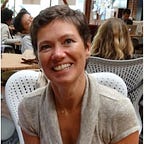What’s Your City’s or Neighborhood’s Vocation?
This article was first published by USGBC Los Angeles Chapter on June 22, 2017. The original can be found here: http://usgbc-la.org/blog/whats-your-citys-or-neighborhoods-vocation/
The idea that a city or a neighborhood has a vocation may sound strange as the concept is usually applied to humans, not places. Yet, the notion of a place’s vocation begins to make sense when you think of a place as a socio-ecological system that has the properties of a living system. All living systems have a vocation, realized or unrealized. Put this way, the notion of a place’s vocation becomes intriguing.
The places we love feel unique and distinctive: the vibes and energy we feel while wandering in Little Tokyo are quite different from the ones experienced when spending an afternoon in Korea Town or East Hollywood. Each neighborhood has its own personality and delivers its very own experience. The same can be said if one contrasts, let’s say, Los Angeles and San Francisco. For these places to have a vocation, however, something more than just personality needs to be at play.
The Merriam-Webster dictionary defines vocation as “a summons or strong inclination to a particular state or course of action.” One says a person has a vocation when drawn to a particular occupation for which that person is well suited, trained or qualified. The calling to a religious life, for example, is a traditional use of the word. A vocation is related to a person’s inherent potential and is realized when it positively contributes to a larger whole. A doctor realizes her vocation when she facilitates her patients’ healing process. The doctor’s vocation is called forth in response to the patients’ need for healing. In this way, the vocation of a living system arises from something bigger than the system, yet must be grounded within the system’s potential.
To explore place vocation, consider a place nested within its larger system. This system could be a district, city, region, or watershed. Its boundaries are defined by the connections and relationships between the place and the larger system that share identity and alignment of purpose. Once the system is defined, the distinctive characteristics, identity, and unique potential of each community within the system emerge and serve some portion of the larger system. By uniquely fulfilling this potential by providing value to the greater whole, the community’s vitality increases.
This same value-adding relationship that exists between a place and its greater system can be found between a development or design/construction project and the community within which it lives. This nested relationship — a project within a place within a greater system — creates regeneration. To be regenerative, a project must define its vocation in a way that unleashes the potential of the place so that it contributes to the greater whole and increases its vitality and long-term viability. In a similar way, our organs contribute to our overall health and vitality. As we become healthier, we are better able to also contribute to the well-being of our family or other social systems to which we belong.
Uncovering the vocation of a place has three main benefits for community development. First, a clearly articulated and understood vocation can be highly inspirational for a community and can spark creative energy and agency as people begin to recognize the unique characteristics of their place, its potential, and the value it offers. Second, a vocation provides a direction and context for guiding design and development activities and ensuring that projects in the community are aligned and integrated toward a shared vision grounded in the identity of the place. Third, a neighborhood that realizes its vocation may gain more widespread recognition of the important role it plays and the value it delivers to the larger system thereby reinforcing the community’s sense of pride and belonging.
The recently completed analysis of the distinctive qualities of the Thames River near New London, Connecticut, by The Regenesis Group, illustrates the power of defining the vocation of a place. Using a methodology called Story of Place, the Regenesis team uncovered recurring patterns across the natural and human histories of the place that are characteristic of the area. They articulated the vocation of the Thames River as A Center for Growing Innovation Culture — a role that the place is uniquely called to play in service of other communities in Connecticut and along the eastern seaboard. The realization of this vocation calls for a conscious cultivation of innovation capabilities that can be spread across and integrated into every sector of the community — education, policy, entrepreneurialism, and investment. The community pride and identity fostered through this process will support the pursuit of this effort into the future.
Many thanks to Ben Haggard, from The Regenesis Group, for his input on this article.
